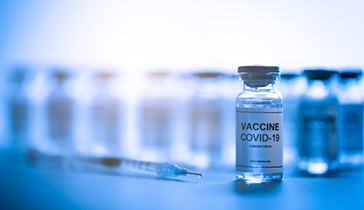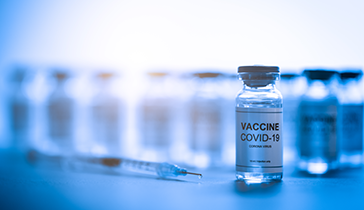September is Sickle Cell Awareness Month—a time to reflect on how many people are affected by Sickle Cell Disease (SCD) and how much more needs to be done to fund research and put an end to it once and for all.
However, for Teonna Woolford, every month is Sickle Cell Awareness Month.
“As an advocate, Sickle Cell Awareness month for me is every month, every day,” Woolford, Co-Founder and Chief Executive Officer of Sickle Cell Reproductive Education Directive (SC RED), told BIO in an interview to discuss her experience as a Sickle Cell patient and advocate.
BIO recently connected with Woolford to better understand the meaning of this month to patient advocates who dedicate themselves to ensuring that they and future patients have better outcomes facilitated by more research.
Women’s Health and SCD
“There’s a long history in this country of women in general, Black women in particular, not having autonomy over their own bodies,” Woolford told BIO. She has grappled with being both a SCD patient and a woman contending with fertility struggles as a result of a bone marrow transplant for her SCD treatment.
SC Red was established as a 501(c)(3) in April 2021 to, "provide education on reproductive health concerns, establish standards for effective and high-quality reproductive health care across the life span, and advocate for policies and processes that will improve access to comprehensive reproductive health care," according to Woolford. Dr. Lydia Pecker is a Co-Founder and Vice Chief Medical Officer of SC Red, while hematologist Dr. Kim Smith-Whitley is also a Co-Founder and Chief Medical Officer of SC Red.
Inequities in research funding
Sickle Cell Disease (SCD) impacts approximately 100,000 people in the United States. In the United States. It disproportionately impacts Black and Hispanic communities in the U.S., occurring in 1 out of 365 African-American births and in 1 out of 16,300 Hispanic births.
With these facts in mind, it is staggering to realize just how little research funding this illness gets versus Cystic Fibrosis (CF), for example, which impacts approximately 30,000 people in the United States, most of whom are white. According to an original investigation by the JAMA Network Open, from 2008 to 2018, federal funding was greater per person with CF ($2,807) versus patients with SCD ($812). Foundations also provided greater funding for CF ($7,690) than for SCD ($102).
Such inequities may worsen if regulation makes it more difficult to fund groundbreaking research. Congress is considering H.R. 3, which has the stated goal of lowering drug costs, but would instead reduce the funding available for researchers to do the work needed to bring revolutionary new drugs to market. Ultimately, H.R. 3 “would essentially freeze up funding sources for small biotechs nationwide,” according to BIO President and CEO Dr. Michelle McMurry-Heath in the latest episode of the I am BIO podcast.
Good Day BIO spoke earlier this year with Dr. Ted Love, President and CEO of Global Blood Therapeutics (GBT), which manufacturers Oxbryta, the first FDA-approved drug targeting the underlying cause of SCD rather than just its symptoms. Dr. Love described SCD as “the epitome of disparity.” And “the lack of investment” in researching SCD “is another disparity,” he added.
The COVID Factor
Advocacy efforts by and for SCD patients has become substantially more difficult during the COVID-19 pandemic.
“This whole phenomenon of being in this pandemic is that everyone is isolated and that every community [including those with SCD] have been isolated,” said Woolford. SCD patients oftentimes cannot even be admitted to hospitals for their own treatment emergencies lately, due to hospitals being full with COVID patients.
“We already weren’t prioritized and we are now even falling lower in the totem pole [of patient care],” said Woolford. SCD patients often bring family members or friends with them to advocate with care providers on their behalf, but due to fears of contracting COVID-19, SCD patients lately have not been able to rely on that support when seeking care.
Moving Forward
Woolford told BIO that she hopes the “next generation [will be] confused about why we even needed this organization [SC Red].”
We’re already seeing signs we could get there. Whether it is GBT’s Oxbryta or the clinical trials being run by Bluebird Bio for a gene therapy that it is developing, SCD patients have many more reasons to be hopeful these days. In addition, the gene editing technique CRISPR may also hold the keys to a future cure, according to a promising clinical trial.
But this progress will undoubtedly stall if proposals like H.R. 3 are enacted. To ensure the continuation of promising research, BIO is doing its part to stand with patients.
BIO is looking to educate and mobilize patients on the importance of the legislative process and the impact that it can have on patient care, through its savecures.org website. In addition, BIO is connecting patient advocates to their members of Congress through savecures.com to tell them why H.R. 3 will harm patients and future cures.





.jpeg?itok=ByJuBfy-)














.png)


